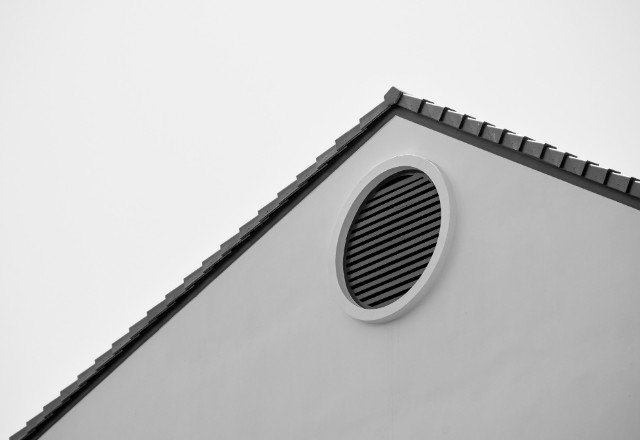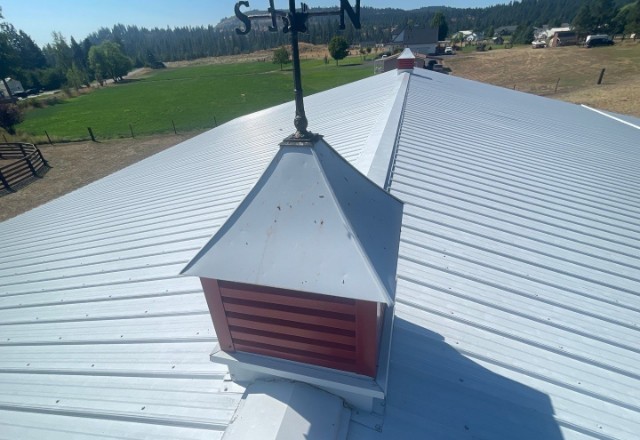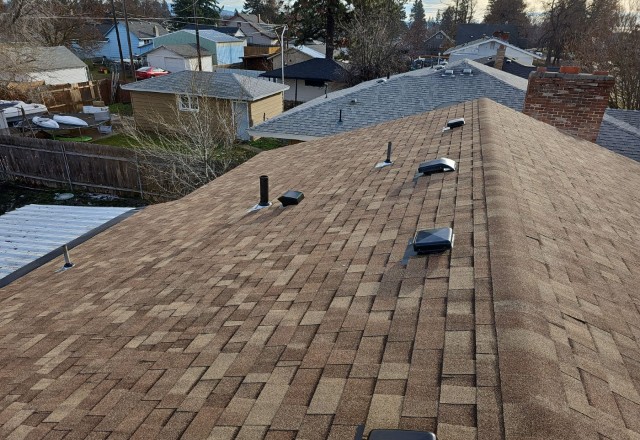As a homeowner, it’s crucial to understand the various types of attic vents available and their roles in maintaining a healthy, energy-efficient home. Proper attic ventilation is essential for regulating temperature, controlling moisture, and extending the lifespan of your roof. In this comprehensive guide, we’ll explore the different types of attic vents, their benefits, and how to determine the best ventilation setup for your home.
The Importance of Attic Ventilation
Before diving into the types of attic vents, let’s discuss why proper attic ventilation is so important. An adequately ventilated attic offers several key benefits:
- Temperature regulation: Attic vents help prevent heat buildup during summer months, reducing cooling costs and preventing premature aging of roofing materials.
- Moisture control: Proper ventilation helps remove excess moisture from the attic, preventing the growth of mold, mildew, and rot.
- Energy efficiency: By regulating attic temperature and moisture, vents help maintain a comfortable living space and reduce energy consumption.
- Extended roof lifespan: Adequate ventilation prevents damage to roofing materials caused by heat and moisture, ultimately extending the life of your roof.
- Ice dam prevention: In colder climates, attic vents help prevent the formation of ice dams by allowing cold air to circulate and maintain a consistent roof temperature.
Types of Attic Vents
There are several types of attic vents available, each with its own set of advantages and disadvantages. Let’s explore the most common types of attic vents and their characteristics.
Ridge Vents
Ridge vents are installed along the peak of the roof, allowing warm air to escape from the attic. They are often used in conjunction with soffit vents to create a continuous flow of air through the attic space.
Pros | Cons |
– Provide even, continuous ventilation – Aesthetically pleasing and less noticeable – Work well with soffit vents for optimal airflow | – May not be suitable for homes with complex roof designs – Requires professional installation for proper performance – Can be vulnerable to snow and debris buildup |
Best suited for: Homes with simple gable or hip roof designs and ample roof pitch.
Soffit Vents
Soffit vents are installed under the eaves of the roof, allowing cool air to enter the attic space. They work in tandem with ridge vents or other exhaust vents to maintain proper airflow.
Pros | Cons |
– Provide a continuous source of fresh air – Help prevent moisture buildup and ice dams – Work well with ridge vents for optimal ventilation | – May not provide sufficient ventilation if used alone – Can be prone to insect and rodent intrusion if not properly screened – Requires careful balance with exhaust vents for proper performance |
Importance: Soffit vents are crucial for creating a balanced ventilation system when used with appropriate exhaust vents.
Gable Vents
Gable vents are installed on the gable ends of the attic, allowing air to flow in and out of the space. They are often used in pairs, with one vent placed high on each gable end.
Pros | Cons |
– Simple and economical to install – Can provide effective ventilation in certain situations – Aesthetically pleasing and can add character to a home | – May not provide even ventilation throughout the attic – Can be less effective than ridge and soffit vent combinations – May allow rain, snow, or debris to enter the attic if not properly designed |
Placement considerations: Gable vents should be placed high on the gable ends, with one vent on each end for optimal performance.

Box Vents (Louver Vents)
Box vents, also known as louver vents, are static exhaust vents installed on the roof’s surface. They allow hot air to escape from the attic and are often used in combination with soffit vents.
Pros | Cons |
– Relatively easy to install – Inexpensive compared to other vent types – Can be effective in removing hot air from the attic | – May not provide even ventilation throughout the attic – Can be prone to leaks if not properly installed or maintained – May be less aesthetically pleasing than other vent types |
Ideal number and placement: The number of box vents needed depends on the attic’s size and layout. They should be evenly spaced on the roof’s surface for optimal performance.
Power Vents (Attic Fans)
Power vents, also known as attic fans, are electrically-powered vents that actively remove hot air from the attic space. They are typically thermostatically controlled and can be solar-powered or connected to the home’s electrical system.
Pros | Cons |
– Can quickly remove hot air from the attic – Helps reduce cooling costs during hot weather – Can be effective in removing moisture from the attic | – Requires electrical power to operate – Can be noisy during operation – May not be necessary if adequate passive ventilation is present |
When to consider using power vents: Power vents may be beneficial in homes with inadequate passive ventilation, or in regions with extremely hot summers.
Cupola Vents
Cupola vents are decorative roof structures that also serve as functional vents. They are typically installed at the peak of the roof and can add a unique architectural element to a home.
Pros | Cons |
– Can provide effective ventilation – Add visual interest and charm to a home’s exterior – Can be combined with other vent types for optimal performance | – Can be more expensive than other vent types – May require professional installation – May not provide sufficient ventilation on their own |
Aesthetic considerations: Cupola vents come in various styles and sizes to complement different home designs and personal preferences.

Calculating Attic Ventilation Requirements
To ensure your attic is properly ventilated, it’s essential to calculate the required amount of ventilation based on your attic’s size and layout. The general guideline is to provide 1 square foot of net free vent area (NFVA) for every 300 square feet of attic floor space.
| Attic Floor Space | Minimum NFVA Required |
|---|---|
| Up to 1,500 sq. ft. | 5 sq. ft. |
| 1,501 to 3,000 sq. ft. | 10 sq. ft. |
| 3,001 to 4,500 sq. ft. | 15 sq. ft. |
| 4,501 to 6,000 sq. ft. | 20 sq. ft. |
Factors affecting ventilation needs:
- Climate: Homes in hot, humid climates may require more ventilation than those in cooler, drier regions.
- Roof pitch: Steeper roof pitches may require more ventilation due to increased attic volume.
- Insulation: Adequate insulation can help reduce ventilation requirements by minimizing heat transfer.
Combining Attic Vent Types
Using a combination of attic vent types can provide optimal ventilation performance. The most common and effective combination is the use of ridge vents and soffit vents, which creates a continuous flow of air through the attic space.
| Vent Combination | Benefits |
|---|---|
| Ridge vents + Soffit vents | – Provides continuous, even ventilation – Promotes natural airflow through the attic – Helps maintain consistent attic temperature and moisture levels |
| Gable vents + Soffit vents | – Can be effective in certain attic layouts – Allows for cross-ventilation – Can be a good option for homes with limited ridge space |
| Box vents + Soffit vents | – Provides a balance of intake and exhaust ventilation – Can be effective in removing hot air from specific areas of the attic – Relatively easy and economical to install |
Ensuring proper balance and airflow: When combining vent types, it’s crucial to ensure that the intake and exhaust vents are balanced and provide adequate airflow. A professional roofing contractor can help you determine the best combination and placement of vents for your specific attic layout and ventilation needs.

Attic Ventilation Myths and Misconceptions
There are several common myths and misconceptions surrounding attic ventilation. Let’s address a few of the most prevalent ones:
- Myth: More vents are always better.
- Reality: While adequate ventilation is essential, having too many vents can actually disrupt the balance of airflow and reduce the effectiveness of the ventilation system.
- Myth: Attic ventilation is only necessary in hot climates.
- Reality: Proper attic ventilation is important in all climates. In colder regions, it helps prevent moisture buildup and ice dam formation, while in hot climates, it helps reduce heat buildup and cooling costs.
- Myth: Attic fans are a substitute for proper ventilation.
- Reality: While attic fans can help remove hot air from the attic, they should not be relied upon as the sole means of ventilation. A balanced system of intake and exhaust vents is still necessary for optimal performance.
Attic Ventilation Maintenance
To ensure your attic ventilation system continues to function effectively, regular maintenance is essential. Here are some key maintenance tasks:
- Inspect vents regularly: Check for any blockages, damage, or signs of wear and tear. Remove any debris, such as leaves or bird nests, that may obstruct airflow.
- Clean vents: Periodically clean the vents to prevent dust and dirt buildup, which can reduce their efficiency.
- Check for leaks: Inspect the area around the vents for any signs of water intrusion or leaks. Address any issues promptly to prevent moisture damage.
- Ensure proper insulation: Make sure your attic is adequately insulated to minimize heat transfer and reduce the load on the ventilation system.
- Seek professional assistance: If you notice any significant issues or have concerns about your attic ventilation system’s performance, consult a professional roofing contractor for an assessment and recommendations.

Conclusion
Understanding the different types of attic vents and their roles in creating a well-ventilated attic space is crucial for maintaining a healthy, energy-efficient home. By familiarizing yourself with the various vent options, calculating your attic’s ventilation requirements, and ensuring proper maintenance, you can optimize your attic ventilation system and enjoy the numerous benefits it provides. If you have any questions or concerns about your attic ventilation, don’t hesitate to consult a professional roofing contractor for expert advice and guidance. With the right combination of attic vents and proper care, you can ensure your home remains comfortable, efficient, and protected for years to come.



 509-201-4190
509-201-4190
